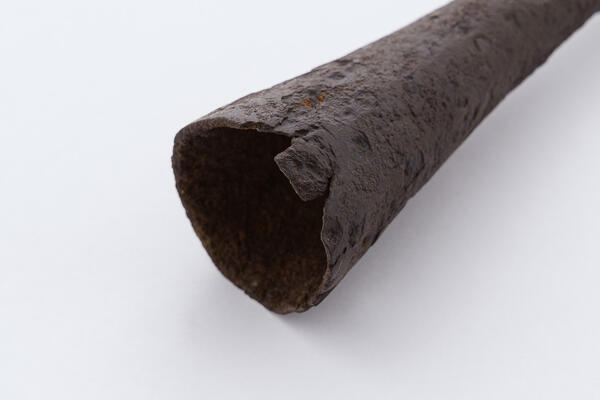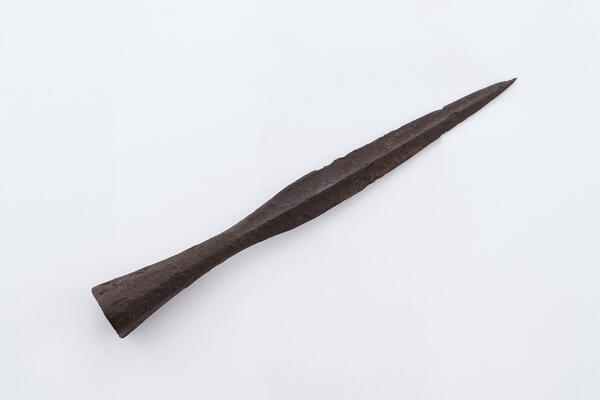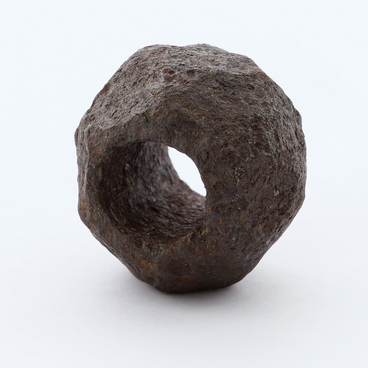The exhibition at the State Museum-Reserve “Kulikovo Field” features a spearhead displayed in its main hall “Rus and Horde: 14th Century Warfare”. This is part of a piercing weapon with a long shaft used in the 14th and 15th centuries. This iron bear spear has an elongated, laurel-shaped blade with a profiled rib — a thickening along the central line of the blade for reinforcement — and a robust faceted sleeve. At the bottom of the stem, there is a rounded mounting hole.
A bear spear is a heavy spear featuring a relatively thick, durable shaft and a large head with a wide and flat double-edged tip. It serves as a versatile stabbing and cutting weapon. Due to its weight, it has significant penetrating power and can pierce any armor. Bear spears were employed as both combat and hunting weapons.
Bear spears emerged around the mid-12th century, as confirmed by written sources. Their first mention appears in the 1149 Laurentian Codex. This type of weapon remained in use until the late 17th century. During the time of the Battle of Kulikovo, bear spears were fairly common.
The bear spear was found at the site of the Battle of Kulikovo near the village of Khvorostyanka. It is believed that this weapon belonged to a warrior of the army of Grand Duke Dmitry Donskoy because there are no records documenting its use by the Golden Horde.
During the era of the Battle of Kulikovo, bear spears were mentioned in Russian chronicles. The Nikon Chronicle describes the tragic Battle on the Pyana River that took place on August 2, 1377. Arab Shah, the khan of the Golden Horde, defeated the Russian army, “The bear spears, lances, and spears had not been prepared; some had not even been assembled.”
The displayed spearhead belongs to a large group of spears that were used in Europe, Scandinavia, and Russia. This type of spear is regarded as versatile and characteristic of both cavalrymen and infantrymen.





